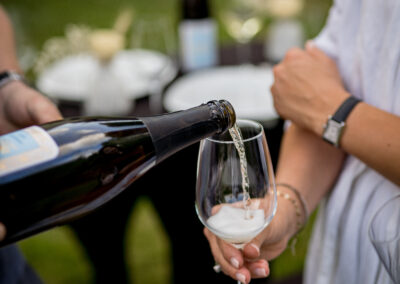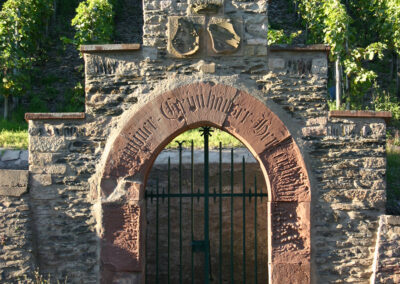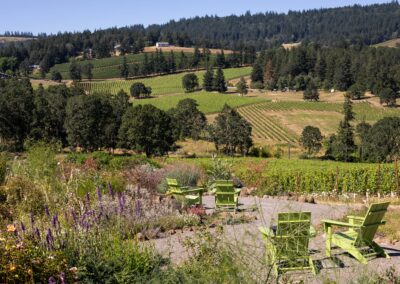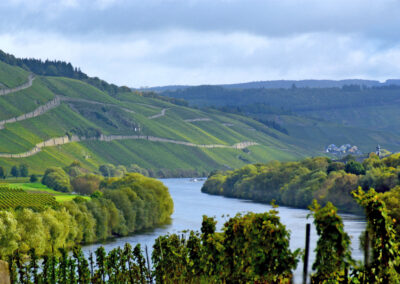As the kids head back to school and get back into learning, we figured now would be a good time to go back to the basics! Enjoy this light-hearted refresher course on terroir, wine aging, and wine tasting.
Terroir
Arguably one of the most unique and nuanced wine terms is the French word, “terroir,” meaning “sense of place.” The land and climate where a wine is grown impart unique characteristics to the wine—characteristics that can only come from that exact place. Terroir is the reason Oregon wine tastes different than German wine even if it’s the same variety. Wines from the same region but different vineyards will also display terroir differently. The soil type in a vineyard can play a major role in determining terroir expression. Soils can be divided into four main soil types: igneous, metamorphic, sedimentary, and alluvial. Let’s explore how these different soil types contribute to terroir.

The red volcanic soil of the Ürziger Würzgarten Vineyard in the Mosel
Igneous Soils
Igneous soils are made of extrusive and intrusive rocks that form from the cooling and solidification of magma or lava from within or below the Earth’s crust. Extrusive rocks are formed by magma that has emerged on the Earth’s surface, and intrusive rocks are formed within the Earth’s crust as magma cools and solidifies. Volcanic and Granite soils are classified as igneous. Volcanic rocks, particularly basalt, retain and reflect heat contributing to the health of a vineyard. These soils are also finely grained which makes them well-draining. Taste the difference in terroir with J. Christopher’s Basalte or Volcanique Pinot Noirs; each bottling typifies Oregon basalt and volcanic soil expression.
Metamorphic Soils
Metamorphic soils are made up of transformative rocks, those that have become another type of rock through heat and pressure over millions of years. Slate and schist soils are common types of metamorphic soils. The Mosel is known for its slate soils that are well-draining, mineral-rich, and absorb and reflect heat. Slate enhances the acidity in Riesling giving it more zip and zing!
Sedimentary Soils
Sedimentary soil is comprised of solidified minerals and organic deposits, often what is left behind by bodies of water. Limestone, sandstone, and flint are types of sedimentary soils. Wines grown in limestone soils have bright, linear acidity that bodes well for longevity. Burgundy has a high concentration of limestone soils, as does the Rheinhessen in Germany where the wines of Wittmann benefit from a unique soil composition of loamy topsoil and limestone subsoil.
Alluvial Soils
Alluvial soils are a blend of other soil types and textures typically combined with clay, silt, sand, and gravel. This soil type is deposited by running bodies of water over many years. Alluvial soils often contain a lot of organic material that makes the soil very fertile and are found throughout the world’s many winegrowing regions.
Aging
The most common way to age wine is in oak barrels to develop flavor, maturity, and longevity. But there are other ways to age wine and each vessel imparts different characteristics on to the wine. Stainless steel and concrete can also be used to age wine.
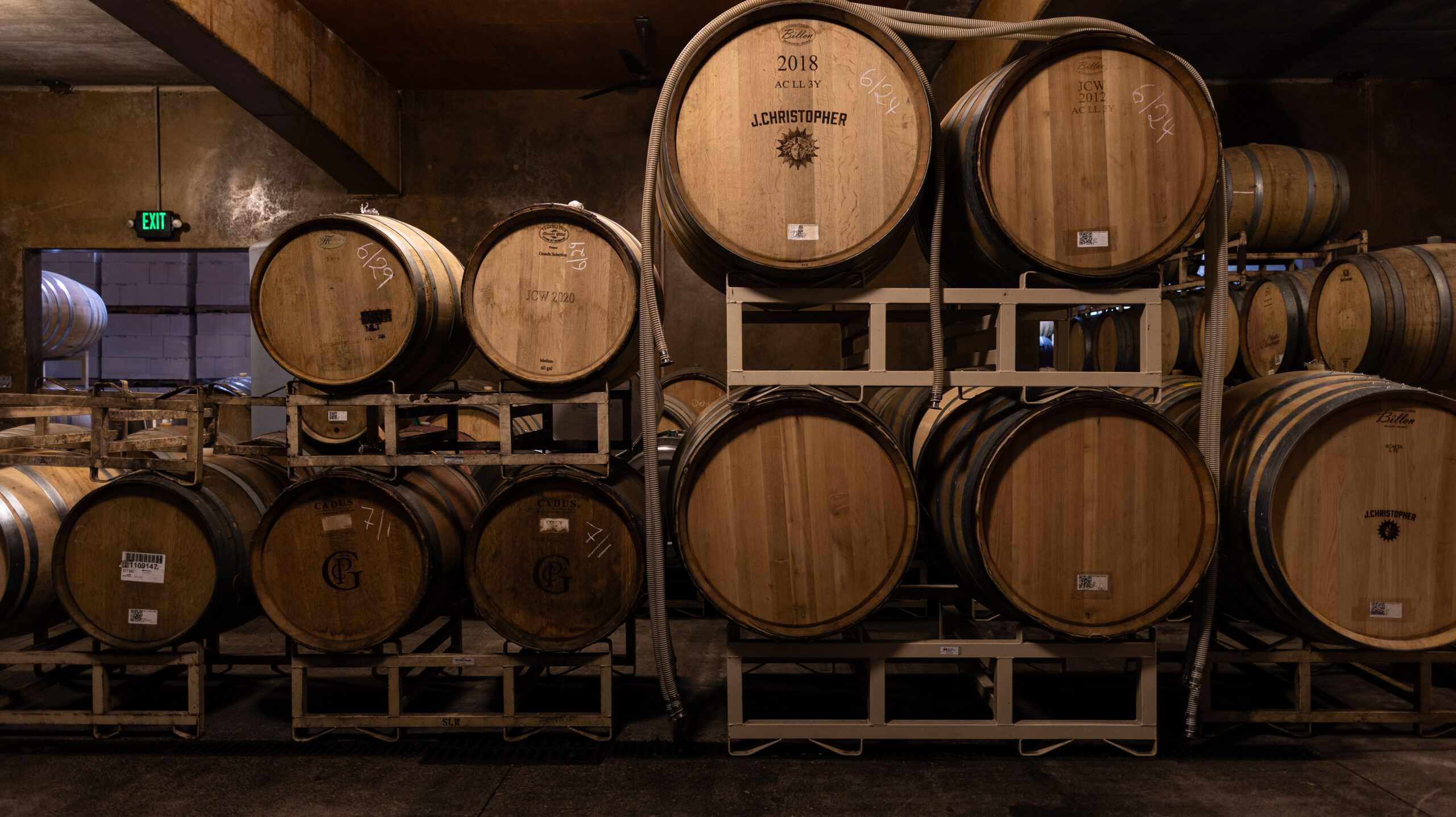
Large-format Chardonnay Barrels in the Cellar at the Appassionata Estate
Oak Barrels
Oak barrels add oxygen, tannins, and flavor characteristics to the wine, which affects mouthfeel, structure, and texture. Barrels that have been toasted will impart more flavor to the wine ranging from vanilla to smoke. These barrels may be made from French oak (the most popular), American oak, and even German oak.
New vs. Old Oak Barrels
The intensity in which oak barrels impart flavor and texture to wine is dependent on the age of the barrel. New barrels have the strongest ability to impart flavor and texture to a wine. After being used for a few vintages, oak barrels become neutral; meaning, they no longer add oak flavor characteristics to wine but the ability to add texture remains. The Appassionata Chardonnay is a prime example of using neutral oak barrels: the wine rests on the full lees for two years in neutral oak before being bottled (to be held for another year in the cellar before its release). While there is a hint of oak influence present in this wine, it is the structure that reveals how this wine was aged.
Stainless Steel
Stainless steel is most commonly used for white wines because it adds crispness and freshness to the wine. Stainless steel also enhances fruit aroma and flavor—a purer expression of fruit than wine aged in oak barrels.
Concrete
Concrete vats have been used since ancient times and are still used today. A benefit to concrete is it’s naturally cool making it good for white wine during the fermentation process. Like wood, concrete is porous meaning oxygen can reach the wine but without adding flavor. Concrete allows the fruit to shine on its own producing a better mouthfeel. Modern applications of concrete include the concrete egg which is often used for making white wines. These eggs resemble the shape of an old amphora but have a superior ability to produce graceful wines than traditional clay amphoras.
Tasting
Wine is the gift of patience and passion. Winemakers make deliberate choices in the vineyard and in the cellar to create beautiful wines—but that takes time! It can take up to a year (and considerably longer) before the wine is ready to drink. This lengthy process is part of what makes wine unique and worth drinking. The aroma, texture and structure, and taste of the wine are the magnificent results of this labor-intensive process.
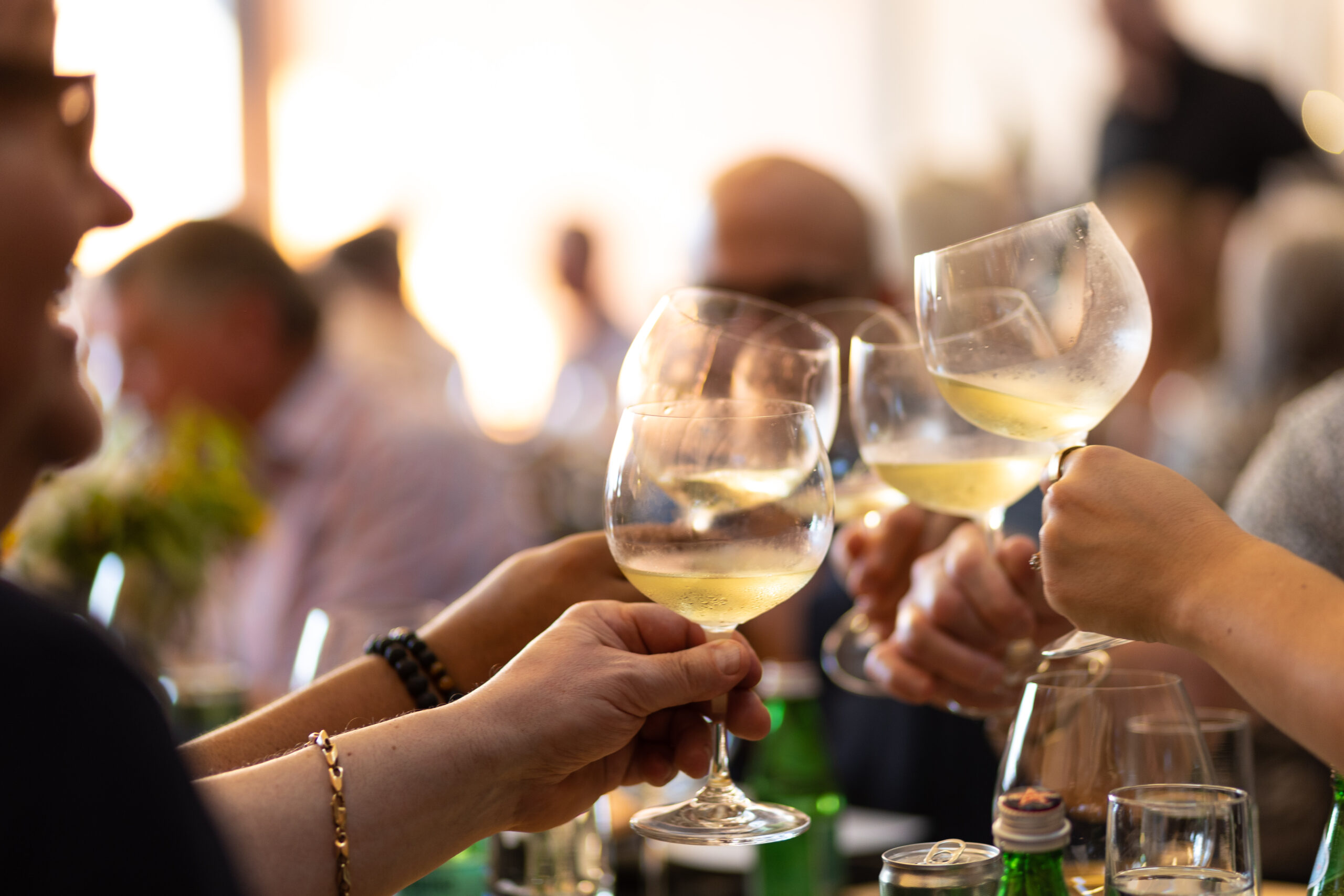
Large-format Chardonnay Barrels in the Cellar at the Appassionata Estate
Aroma vs. Bouquet
One way to evaluate wine is based on smell, more specifically aroma and bouquet. Aromas are derived from the grape variety and bouquet is derived from the winemaking process. For example, vanilla and smoke notes come from the wine’s bouquet as these characteristics come from the oak barrel the wine was aged in rather than the type of grape the wine was made with.
Texture
Texture or mouthfeel can be used to determine how a wine was made, what harvest was like, and what grape variety was used. Winemakers can create different sensations through various fermentation and maturation techniques. Texture also gives a wine dimension and complexity.
Structure
Structure is a defining characteristic of wine regarding its quality, longevity, and taste. The wine’s structure is its ‘bones’; it’s what gives a wine its shape. Wines with little structure are overly acidic and tannic or too soft and shapeless. On the opposite end of the spectrum, overly structured wines are heavy and without elegance. Well-structured wines are perfectly balanced and have all the components needed to age gracefully over time.
Length and Finish
A wine’s finish is the lasting flavors and textures that linger on the palate, the last impression. Length is a measurement of the finish—quite literally how long the flavors of the wine continue to unfold. Wines of great quality and complexity have long finishes and leave you wanting another sip.
Be sure you’re following us on social media as we continue to go “Back to Basics” all through September! Revisit Wine 101 and refamiliarize yourself with our producers in one place—our Instagram “Highlights” are a great resource for quick information on our producers.


